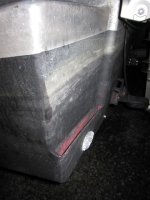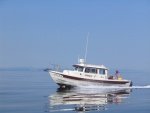ok guys enough of the in fighting... I seem to stir the pot even when I'm not trying to , and I try to enough as it is.
After reading all the links, post comments and info listed above and then some i noticed a few thing.
1) everyone that hates denounces or does not believe in this produce has never USED IT. sorry but theories are for class rooms and I like to see how things work in the real world. remember bumble bees can not fly if they did math. Lucky for the bees they cant do math and go around flying anyhow. told to me by my high school biology and math teacher.
2. As pointed out in other forums. comparing water to air in like comparing air to ground. it's just not the same. as for the use flaps on a plane compared to speed brakes. both slow the plane down but flaps change the direction of the plane. Most flaps on planes EXTEND the surface area of the wing causing more lift but less speed or the same lift at slower speed. they do not cause you to go faster. Speed Brakes on a plane are not on the tail edge of the wind but in the middle area of the wing so are not a comparison to the trim taps in question.
3) everyone that has the tab LOVES them. only one guy replaced them after a faulty install by a bone head. and after they got them reinstalled he liked them. I think he was trying them on to much boat.
4) No one complains of loss of speed at top end or increase of fuel use. if it was a problem then someone would be complaining about it.
As to the "Why do you need them, just move stuff around " folks. Its not easy to move things around every time some one in the boat moves. and my wife likes to move around the boat a lot while we are under way. I also have a tilt to port due to engine torque. It does not go way until the port 50 gallon fuel tank is empty, and even then it comes back with a port side swell. if I did not need them i would not be getting them.
now as to mounting? I have a alum bracket for my motor and at the bottom I have a 1 to 2 inch stand off for the trim tabs to be mounted on. So depending on the wiring coming off the back of the unit I may not have to drill a hole into the hull. If I go with the lenco's, which is my other choice and preferable to me over the Bennett's, then i don't have to drill any holes in the hull but may have to weld another stand off of aluminum for the top part of the actuator so it is the same distance form the hull. with the Volvo produce I would not have to worry about that at all.
So i may drink the cool aid like others in the past and see if it works out as well as the whole earth is round thing did for Galileo. what i would really like to do is go for a ride on a 20 to 30 ft boat with this system.



